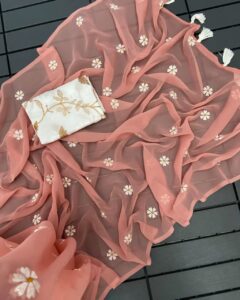
When diving into the world of textiles, certain terms can often seem confusing but are essential for understanding fabric quality and structure. Three of the most important terms in fabric analysis are GSM, weft, and waft. Let’s break them down!
What is GSM?
GSM, or Grams per Square Meter, is a measurement that indicates the weight of fabric. It plays a crucial role in determining the fabric’s quality, durability, and suitability for different applications.
Why is GSM Important?
- Fabric Quality: Higher GSM typically suggests a denser, thicker fabric, which can be more durable and warm. Conversely, lower GSM fabrics are lighter and more breathable.
- Usage: Different applications require different GSM. For instance, t-shirts often have a GSM of 150-200, while heavy denim might range from 300-500 GSM.
- Cost Efficiency: Understanding GSM helps manufacturers and consumers assess the value of fabric based on weight and intended use.
Weft and Warp: The Fabric’s Structure
To understand fabric, it’s essential to grasp the two main components that make up woven textiles: weft and warp.
Warp
- Definition: The warp refers to the vertical threads that run along the length of the fabric. They are typically more tightly stretched and play a significant role in the overall strength of the material.
Weft
- Definition: The weft threads run horizontally across the width of the fabric. They are woven in and out of the warp threads, contributing to the texture and flexibility of the fabric.
The Relationship Between Weft and Warp
The interplay between warp and weft creates the fabric’s overall appearance, strength, and drape. The combination of these two elements influences everything from the texture to the fabric’s end use.
Waft Calculation: Understanding Fabric Construction
While we often hear about warp and weft, “waft” can sometimes cause confusion. However, it’s essentially a variation in terminology referring to the weft threads. Calculating the density and arrangement of these threads can provide insight into fabric quality and construction.
How to Calculate Waft (Weft) Density
- Count the Threads: Measure the number of weft threads in a given width of the fabric.
- Measure the Width: Determine the width over which you’re counting the threads (usually in inches or centimeters).
- Calculate: Weft Density=Number of Weft Threads/ Width of Fabric (in meters)
This calculation gives you a straightforward understanding of the fabric’s construction, indicating how tightly or loosely the weft threads are woven.
Importance of Waft Density
- Texture and Feel: A higher weft density can lead to a softer, thicker feel, while a lower density may yield a crisper texture.
- Durability: Fabrics with a balanced warp and weft density tend to be more durable, while imbalances can lead to weak spots or uneven wear.
- Cost and Performance: Knowing weft density helps in choosing the right fabric for specific needs, ensuring the right balance between performance and cost.
Conclusion
Understanding terms like GSM, weft, and waft is crucial for anyone involved in the textile industry, whether you’re a designer, manufacturer, or consumer. These measurements and definitions can significantly influence fabric selection, ensuring the best outcomes for your projects. So next time you’re browsing fabrics, keep these terms in mind for a more informed choice!













